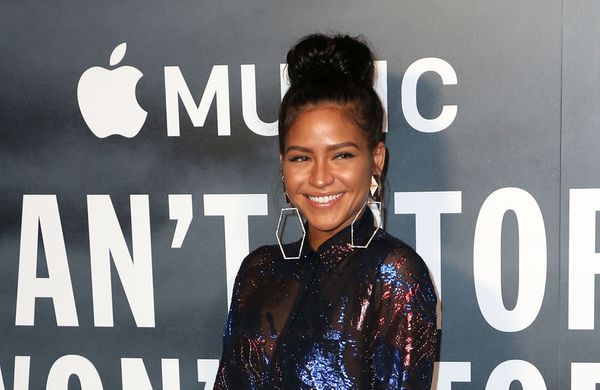
Is drag a revolt against traditional masculinity or just an ironical take on gender-bending impersonation? For the world-famous drag artist Hungry – who has over 3,40,000 followers on Instagram – it’s surprisingly neither. But that doesn’t make Hungry’s avant-garde take on the art form – popularly known as distorted drag – less revolutionary.
Gender shades of grey

“I want gender to be as irrelevant as possible in my work. I want my performances to be themed around emotions and memories. I don’t want it to be just black and white,” says the Berlin-based drag artist, sitting backstage with their inimitable make-up with pearl embellishments and ethereal contouring before their performance at Kitty Su, The LaLit New Delhi. Perhaps this is the reason why Hungry prefers the gender-bending pronoun ‘they’ as opposed to ‘he’ or ‘she’. And it’s this unique approach to their work that wowed the world during their world tour. Hungry has also been associated with numerous fashion designers like Paco Rabanne and Manish Arora, was featured in reputed publications like Paper and was “messaged over Instagram” to collaborate with Academy award-winning singer and songwriter Björk. Who would've thought!
“Growing up in Germany with my Asian background wasn’t easy...People asked me if I was a boy or a girl. It got tiring after a point”
Hungry’s creation of alternate realities on stage can now intrigue, captivate and mesmerise their audience with ease but their real life childhood in Bavaria was tougher than it is for most of us in any metropolitan city. “Growing up, I was really thin and tall. Being in Germany with my Asian background wasn’t easy. A lot of people thought I was feminine-looking. Many of them asked me if I was a boy or a girl. It got really tiring after a point. And, all that prejudice, misunderstanding and ignorance hasn’t left me. It’s still there in my head, which is why I don’t want to talk about it through my work. These instances keep repeating but I don’t want to address it in my art as I feel I’ve been forced enough to talk about it and justify it to others,” reveals Hungry with a sigh.
The artist within

Despite a difficult childhood, Hungry knew there was a better world out there. And the burgeoning drag culture did not take very long to notice the never-seen-before art that Hungry had to offer the world. Hungry saw their strength in being different. “I started out in Germany and the common drag was very feminine and commercialised. When I started exploring drag, I didn’t immediately felt understood (by the audiences) even though Berlin is a very creative city. Germany is a bit a slow on trends. They took some time to appreciate the work and effort that’s put into my drag. I was only 21 when I started out. Drag was just a hobby. It wasn’t really personal at that point. It took a while for me to find my drag character that I felt comfortable in,” they explain.
“On public transport in Berlin, [when wearing drag] one faces verbal assault. In London, nobody talks to you. But in New York City, people came to me and complimented me on my clothes!
When Hungry first told their parents about their interest in drag, they were confused. “My parents thought I wanted to transition and was struggling with my sexuality. Eventually, they saw a photo shoot of mine and realised how my art was going in a theatric direction,” smiles Hungry. The renowned drag artist first performed at Pansy – a popular club amongst the LGBTQIA crowd in the city. “I was invited to perform the second time I went out in my drag. I was very naïve but I was sure of myself. I knew I could be the best and succeed. There wasn’t a major flaw in it although I wasn’t fully stable in my heels and that worried me a lot. I would stumble around in them. But, I rehearsed so much before going on stage. So, of course I was in a panic mode during the first few performances of mine. I was dealing with stage fright for the first time and wasn’t sure if what I was creating would translate to other people,” they say.
There’s always hope

Even though Hungry’s work isn’t political – at the core of drag, as an art form, is still the politics of identity. And yes, Hungry has become an international superstar now but this doesn’t mean that they don’t get those interrogative glances and awkward stares when they are out. “When I was performing in Berlin, I used to take the public transport. And, if you were going out in the night in your drag outfit, you would have to face a lot of verbal assault. A lot of people would stare at me or wouldn’t want to interact with me. In London too, no one really interacted with me. Many of the artists have to face assaults by drunk people or just ignorant people and that’s terrible. In New York, however, I was once dressed in my drag character and a lot of people complimented me,” says Hungry in a despondent but hopeful voice.
“I want gender to be as irrelevant as possible in my work. I want my performances to be themed around emotions and memories”
Hungry, however, has channelled all their angst into their performances – which are so powerful that they can move you to tears. As we near the end of our conversation, there are people – animatedly talking to each other – queued outside Hungry’s changing room to greet them. So, I quickly ask them, ‘What advice would you give to someone whose leanings may not conform with the society’. Hungry gives heart-warming answer after a pause, “It’s hard to put myself in anyone else’s shoes. But, I think it’s important to find your family – people you can be yourself with.”

Follow@drishtivij12 on Twitter
From HT Brunch, December 16, 2018
Follow us on twitter.com/HTBrunch
Connect with us on facebook.com/hindustantimesbrunch
First Published: Dec 15, 2018 20:30 IST







